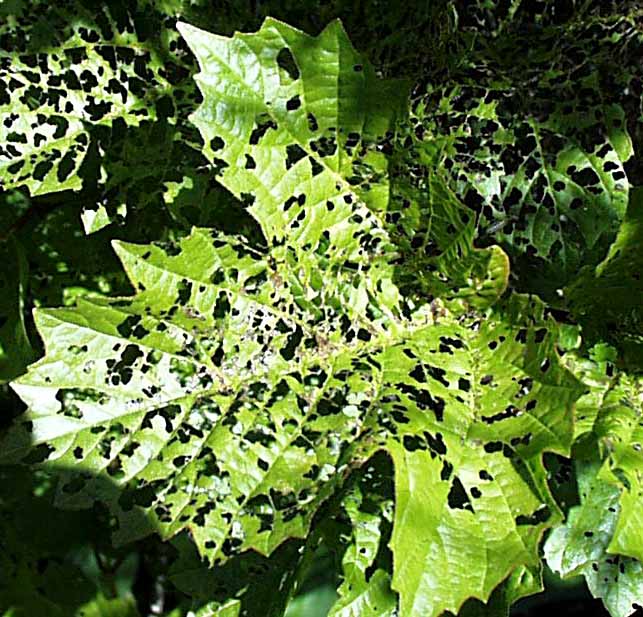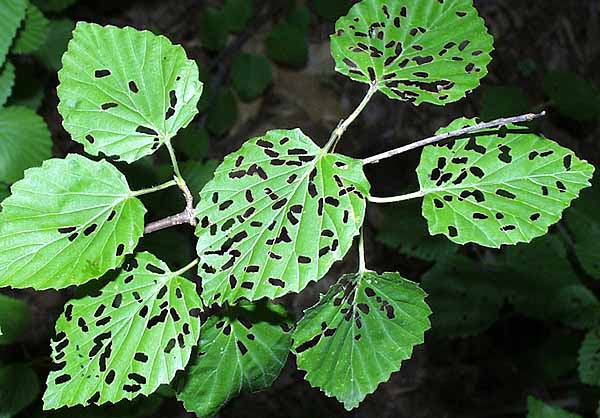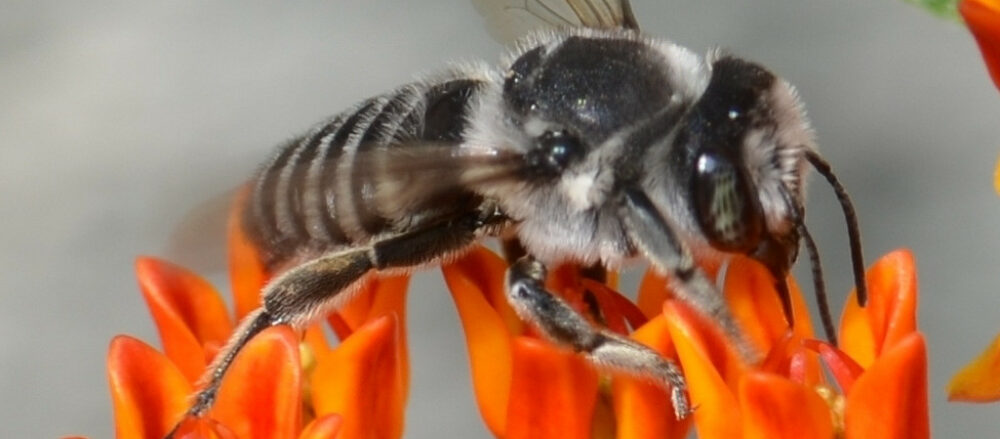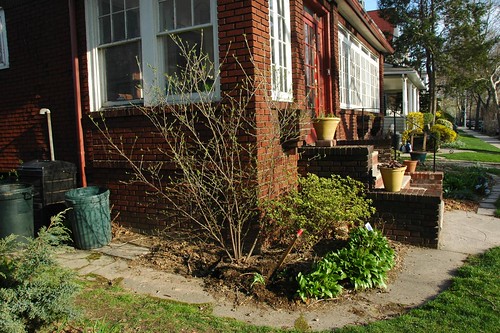Viburnum Leaf Beetle, Pyrrhalta viburni, has been confirmed in New York City this Spring:
John Jordan, Natural Resources Supervisor at Prospect Park Alliance has found evidence of the beetle there, and says that there was a confirmed report on North Brother Island (between Manhattan and Queens) last year. VLBs are suspected to be in some of the larger parks in the Bronx, northern Manhattan and northern Queens.
– Viburnum leaf beetle invading NYC?, Cornell Horticulture Blog, 2009-05-22
Damage caused by feeding larvae. Photo: Paul Weston, Cornell
Unfortunately, my recently transplanted Viburnum dentatum is one of the highly susceptible species. When I left yesterday morning to attend Chicago Spring Fling, it was still in spectacular bloom, covered with white flowers. I would hate to lose it; it’s the largest plant I have, except for the cherry tree. I haven’t noticed any feeding damage, but I will examine it closely when I return, now that I know what to look for.
Damage caused by feeding adults. Photo: Paul Weston, Cornell
The viburnum leaf beetle, Pyrrhalta viburni (Paykull), is an invasive, non-native beetle that first appeared in New York along Lake Ontario in 1996, and has steadily spread. It is a voracious eater that can defoliate viburnum shrubs entirely. Plants may die after two or three years of heavy infestation.
Hat tip to @AboutInsects
[bit.ly]
Related Content
Viburnum dentatum, Arrowwood, 2009-04-20
Links
Cornell VLB Home Page
Viburnum leaf beetle invading NYC?, Cornell Horticulture Blog, 2009-05-22







